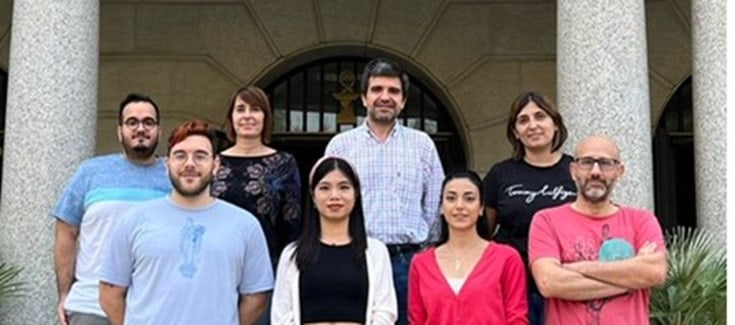GDF15 protein may improve diabetes management

A study led by the University of Barcelona and CIBERDEM shows how a new mechanism could improve the effectiveness of currently available diabetes treatments. The research, conducted in mice and cell cultures, could provide new ways to combat metabolic diseases, which are a global health problem.
Work now published in the journal Metabolism, focuses on the GDF15 protein, a factor that is expressed at high levels in many diseases such as heart failure, cancer or fatty liver disease. Obese patients also have high levels of this protein, but its functioning is altered and those affected may develop resistance to GDF15 (that is, a decrease in the effectiveness of its activity).
The new work is led by Professor Manuel Vázquez-Carrera from the Faculty of Pharmacy and Food Sciences of the University of Barcelona, UB Institute of Biomedicine (IBUB), Sant Joan de Déu Research Institute (IRSJD). ) and the Network Center for Biomedical Research in Diabetes and Related Metabolic Diseases (CIBERDEM). The study also highlights the participation of researchers Patricia Rada and Angela M. Valverde (CIBERDEM/CSIC/UAM) and Professor Walter Wali from the University of Lausanne (Switzerland), as well as other experts.
New Alternatives to Reduce Hepatic Glucose Synthesis
“Our study shows that GDF15 inhibits glucose synthesis in the liver. This pathway plays a crucial role in the occurrence of hyperglycemia (high blood glucose concentrations) in patients with type 2 diabetes,” explains Professor Manuel Vázquez-Carrera.
“The protein’s action will also help reduce the presence of liver fibrosis, a disease that is associated with greater mortality in patients with fatty liver disease,” the researcher notes.
The work shows that GDF15-deficient mice have glucose intolerance and low levels of the liver protein AMPK, which is a sensor of cell energy metabolism and protects against type 2 diabetes.
In addition, these study models also found greater synthesis of glucose in the liver (hepatic gluconeogenesis) as well as fibrosis in this organ.
Everything indicates that all the described changes were caused by an increase in the level of the TGF-β1 factor and the mediator protein SMAD3 in the liver, which are the main inducers of liver fibrosis. Thus, treatment with recombinant GDF15 is able to activate AMPK and reduce the levels of active SMAD3 in mouse liver and primary hepatocyte cultures.
“In conclusion, the results show that GDF15 activates AMPK protein and inhibits gluconeogenesis and liver fibrosis by reducing the TGF-β1/SMAD3 pathway.
“These results suggest that modulation of GDF15 levels may be useful in enhancing the effectiveness of current antidiabetic treatments, since hepatic gluconeogenesis is a key driver of hyperglycemia in patients with type 2 diabetes, and serum TGF-β1 levels are also increased in these patients. “, the researcher concludes.
Help article:
Jurado-Aguilar, J.; Barros, or E.; Bernard, M.; Zhang, M.; Peyman, M; Rada, P.; Valverde, A.M.; Vali, V.; Palomer, X.; Vazquez-Carrera, M. “GDF15 Activates AMPK and Inhibits Hepatic Gluconeogenesis and Fibrosis by Attenuating the TGF-β1/SMAD3 Pathway.”Metabolism, January 2024. Doi: 10.1016/j.metabol.2023.155772.
Source: https://www.ciberisciii.es/noticias/identifican-un-nuevo-mecanismo-que-podria-mejorar-la-eficiencia-de-los-tratamientos-contra-la-diabetes.
